Bats, butterflies, birds, insects or rodents and even the feared wild boars are habitual inhabitants of the vineyard in Spain, one of the European countries that greater biodiversity houses. They are all part of that peculiar ecosystem with the vineyards as the center.
Rodents, mules, dogs, sheep and even geese and chickens fulfill a function in the natural cycle of the vine, although that function is that of accompany their masters and run between vines, which is already something. For this reason, a walk through the vineyards can be, if you like nature, a real immersive experience in biodiversity.
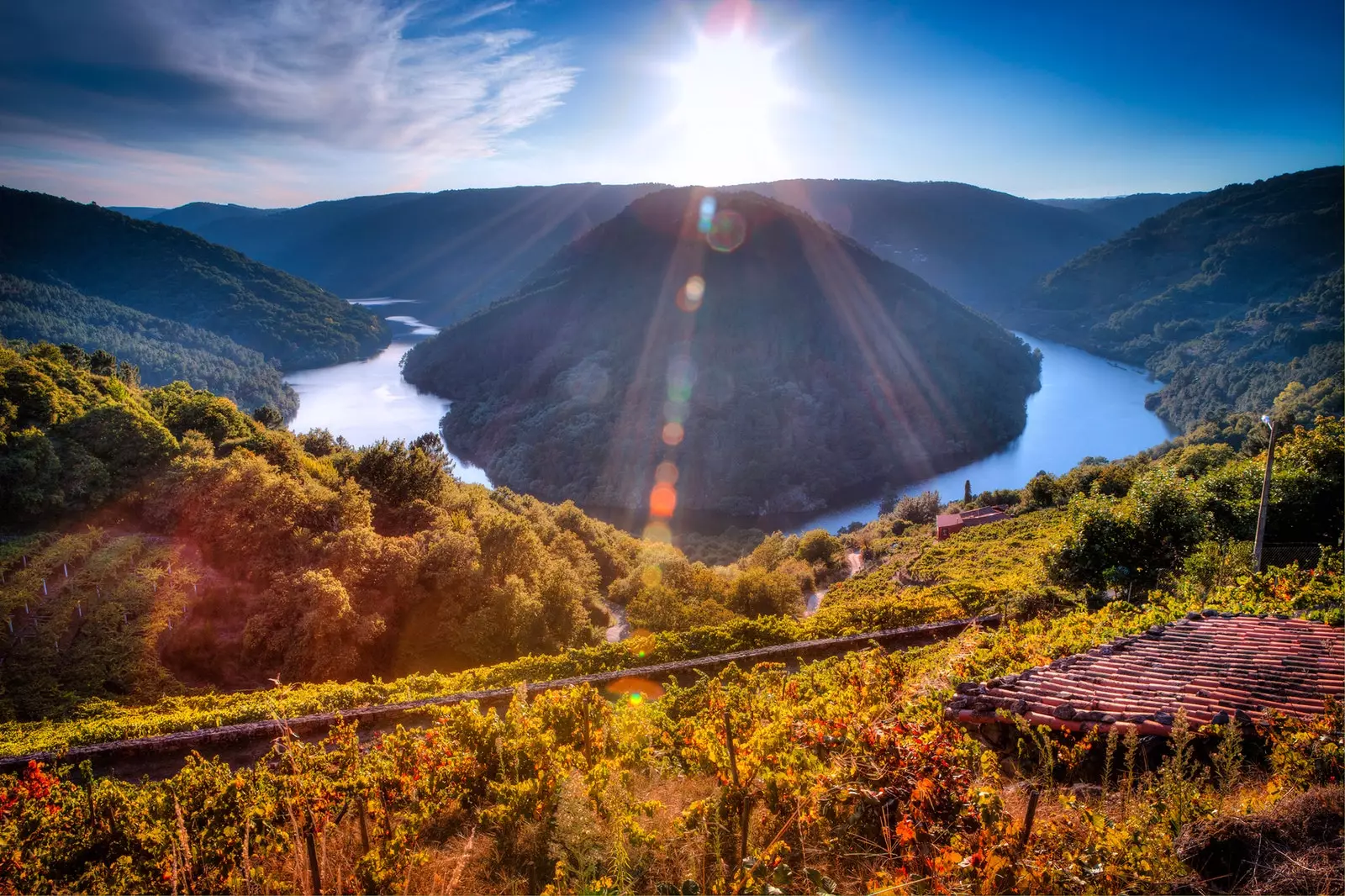
Vineyards in the Ribeira Sacra.
FLYING OVER THE VINEYARD
In a wine plantation flying animals coexist that fulfill different functions and, in a natural way, contribute to maintain the plantation in an optimal state, helping to reduce, or directly dispense with, products such as insecticides or pesticides.
The bats, for example, they are great controllers of pests and indicators of the health of an ecosystem. They are capable of eating, in a single night, up to five hundred insects, so keep and preserve their colonies near the vineyard contributes to its natural balance.
Its importance has been discovered over the years. celler creed, Penedès winery who elaborates respectful wines with the environment, has been one of those that has become aware of the role of these mammals , the only ones capable of flying, and in their honor they make Ratpenat (bat in Catalan) a wine that invites you to make them visible and that, in addition, contributes with the studies that, for more than ten years, it has carried out the Museum of Natural Sciences of Granollers about bats.
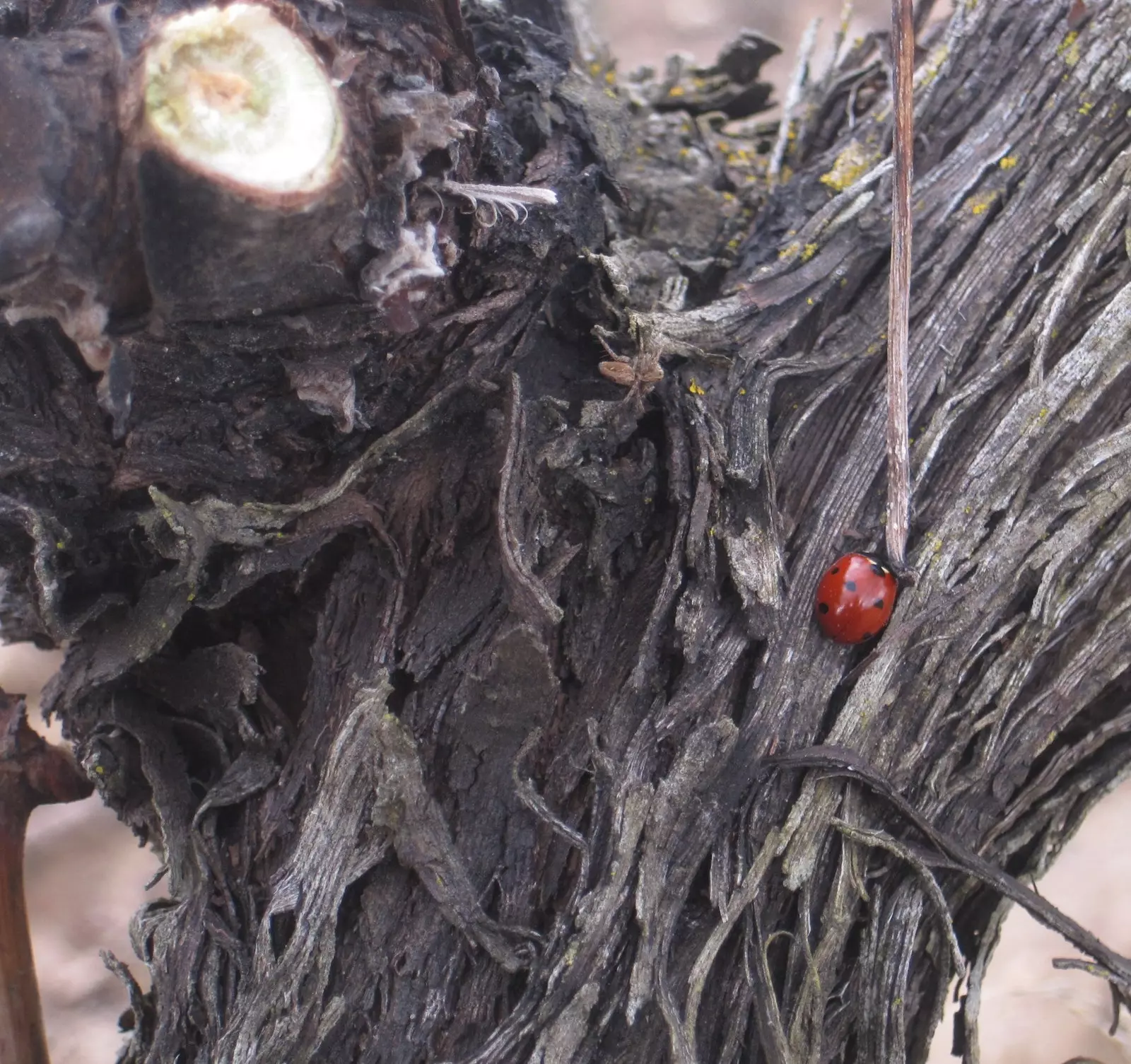
Ladybugs, guardians of the vine.
Insects are common in the vineyard in Spain and elsewhere, although it is not always for the best, because some of the diseases that the vineyard suffers are due to them, such as the woodworm or phylloxera itself. However, others, like ladybugs, they are natural predators that keep harmful insects to the vine at bay. It is increasingly common that in the vineyards insect hotels are installed, spaces built by human beings where they find refuge and stay to live, contributing to the balance of the ecosystem and avoiding the overpopulation of harmful insects.
Other natural inhabitants are birds of different species, from the “alzacola”, common in the vineyards of Montilla-Moriles, to goldfinches, hoopoes, or larks, which adorn with their songs the labors in the countryside. It is not uncommon to find nests of some of them, which take refuge among grapes and vine shoots to raise their chicks.
When the excessive presence of birds causes a problem (some can eat or spoil the grapes) there are those who resort to wildlife control naturally, with birds of prey, as the La Seca winery (Valladolid) Payments of Villavendimia, where Vidal Vidal, a fan of falconry, takes care of his falcons and practices it to keep birds away which are dangerous for the plantation. Without the need for training, other birds of prey, such as the owl, also fulfill this function of natural form.
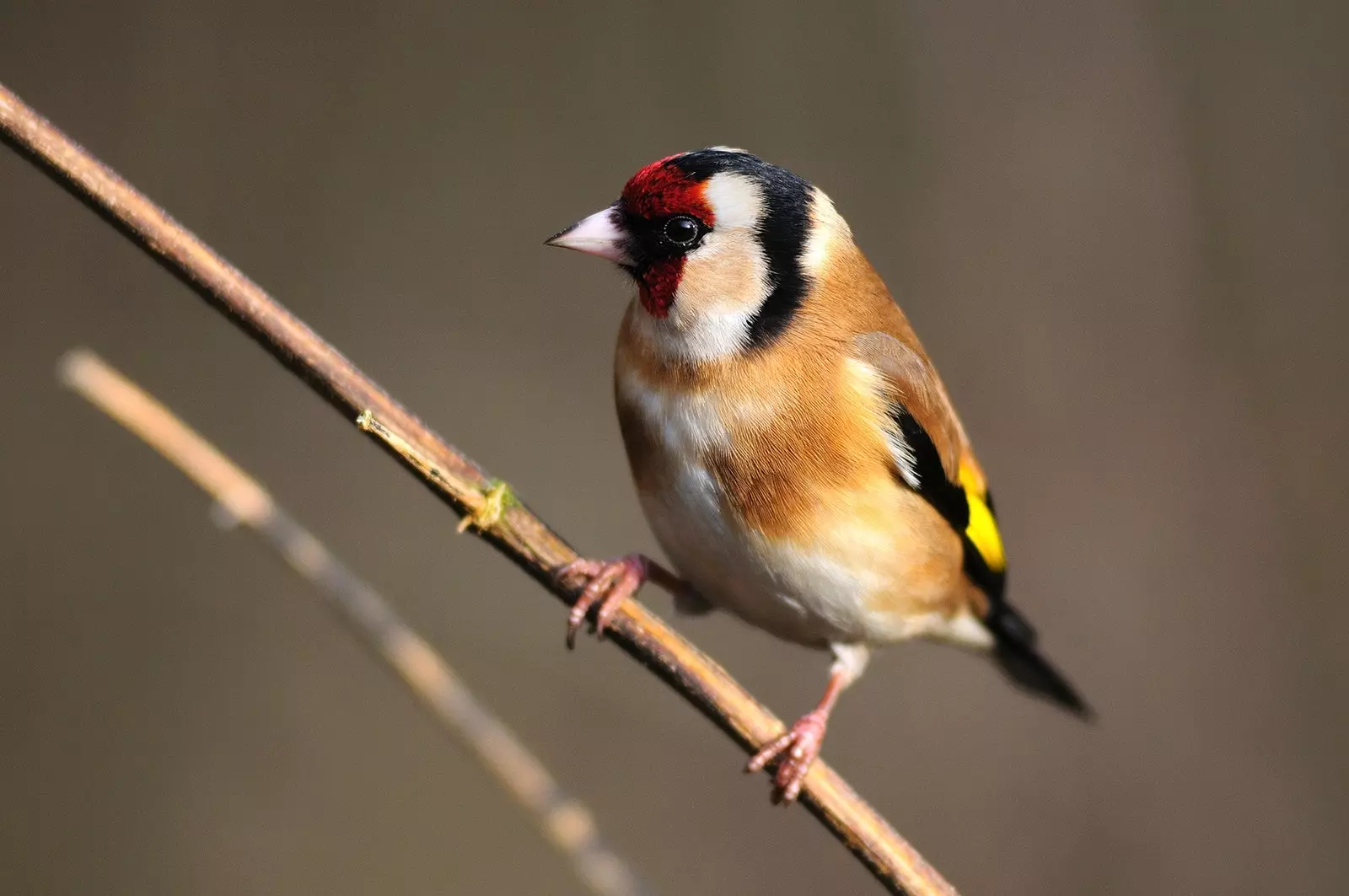
The birds, habitual inhabitants of the vineyards.
The photographer and popularizer of nature Fernando Aguilar shows in images this coexistence, this intimate world of the animals in the vineyard and the beauty of the different species that live among the leaves, stems or fruits. “When we sell a wine, we not only sell a product, but all the wealth and life that is there”, Aguilar comments on his intervention in The Spring of Future Vineyard, last year in Sant Sadurní d'Anoia.
ON THE FLOOR
reptiles like the lizard they are visitors to the vineyard and the photographer has managed to capture them enjoying a grape that has remained hanging on the stump, in addition to feeding on insects and helping to restore balance in the vineyard. EITHER the ophidians, small (or not so small) snakes that are also health bioindicators of the ecosystem where the plantation is located.
WORKING HARD
If there are some animals identify fast when talking about the vineyard are those who work, those who help wine growers to till the vineyard and who contribute with their strength to keep it in good condition.
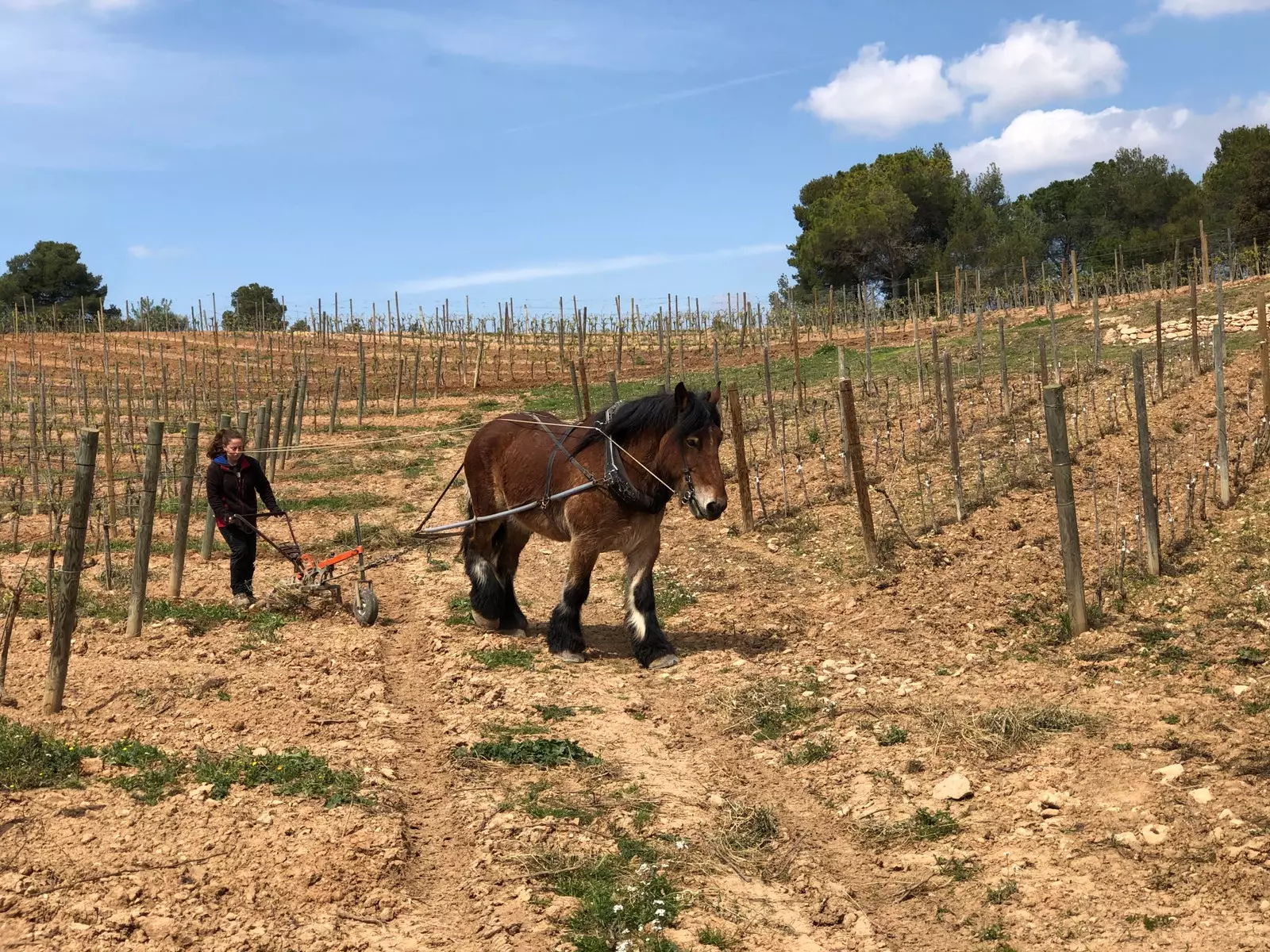
Work horse in the vineyards of Gramona.
More and more producers they use animal traction, dispensing with machinery, to work vineyards, using mules or imposing horses whose strength and resistance is of vital help for agricultural work. Little by little, they appear breeders of these animals, a dedication that does not stop seeming ancient, ancestral, and that communes with the vocation of winegrowers to work in the most natural way possible in a traditional way.
People like Pepe Raventos in Penedes, Alvaro Palacios in Priorat or G-Command in Gredos they use mules or horses to work the vineyard, forming a perfect team with the winegrower. gramona has, in Sant Sadurní d'Anoia, a farm that is essential in your agriculture project biodynamic, since it provides elements such as fertilizers, used to make preparations that are then used in the vineyard.
On his farm, one of the most prized animals is the farm horse, thoroughly trained by one of the few professionals who remain in these tasks, Claude du Sandillon, who speaks of a synergy between man and animal to work the land; Sandillon points out that, with a horse, you have to choose the right time on the land to till and don't force it to work more than you can: "You can't work the land at any time and it is necessary observe the state of the ground to be able to do it; With a horse, therefore, the land is always worked at the right time”.
The horse must get used to the work and to the person with whom he works, and complicity is established a relationship that the expert qualifies as “affective”. In addition, other farm animals, such as the sheep, graze among the vines and not only fertilize them, but also they eat the herbs and avoid having to resort to machinery to eliminate them.
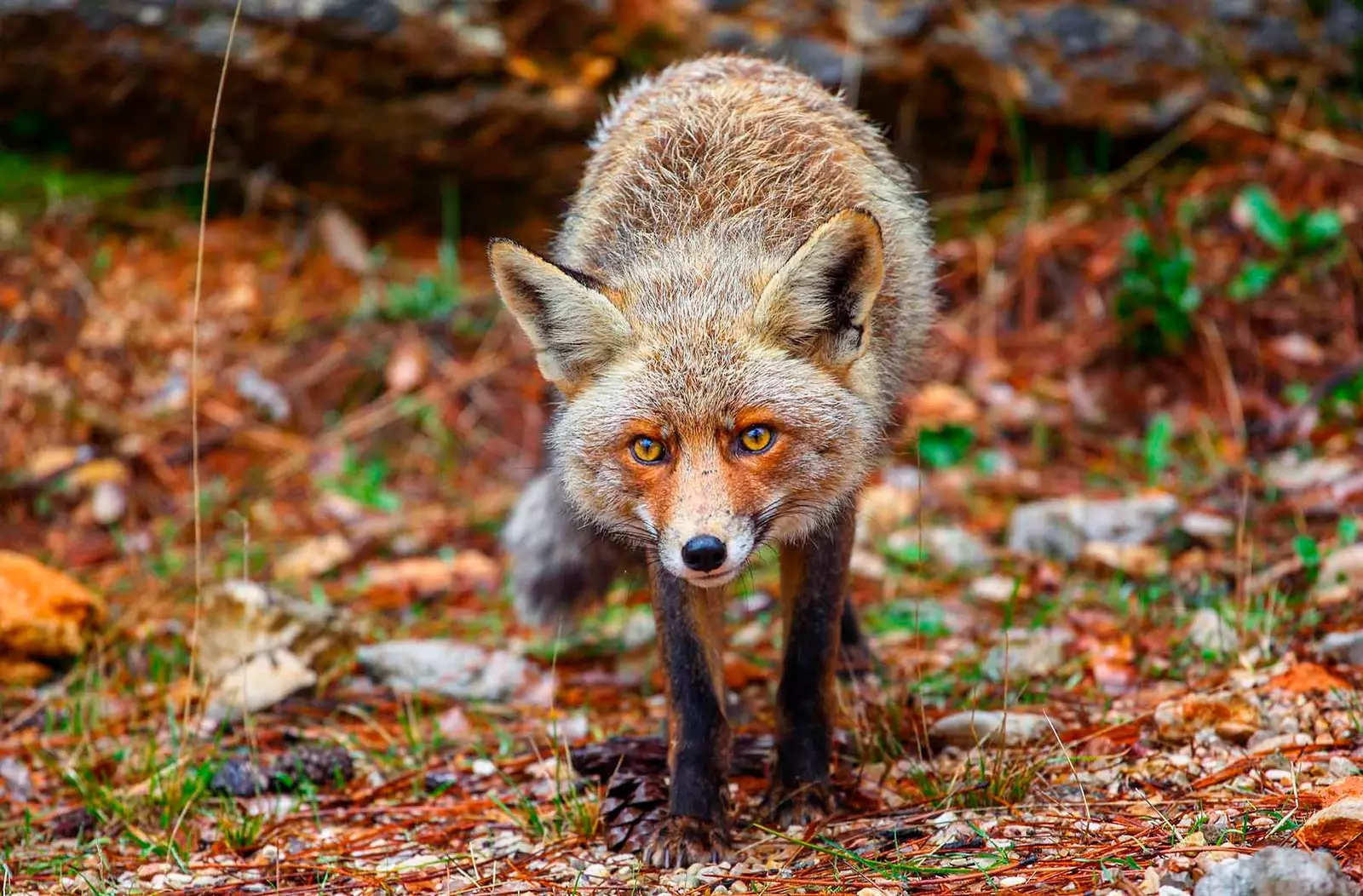
The greedy foxes turn the vineyards into banquets.
GLOTONS AND VANDALS
The vineyard gives no shelter only to animals that help the vines grow healthy, they also "sneak" among the vines some that destroy the plantations or eat the fruits that it costs a whole year get.
Above all, when there is overcrowding as occurs in some regions with rabbits, which cause real quebraderos of head (and economic losses) to the viticulturists. EITHER the voles that, when they go into the vineyards because in other crops, like those of cereals, the harvest has been harvested, don't eat the grapes, but they gnaw the wood and the damage can be greater, because does not affect only the vintage of that year, but to the following ones.
The foxes, however, they are sweeter and can be given a good feast at the expense of a winegrower's grapes, although, on the other hand, they also control the rodent population... the same goes for the boars, an animal whose population is growing by lack of natural predators and that reveals rural abandonment. Deep down, if it raises the alarm about this phenomenon, it may also be your little contribution...
And although the animals do not understand qualities, could affect the most exclusive wines of a winery if they attack vineyards exceptional. For this reason, some resort to fencing them off and protecting them with recorded sounds of birds of prey and other predators, which deter small rodents and protect property without causing them any harm.
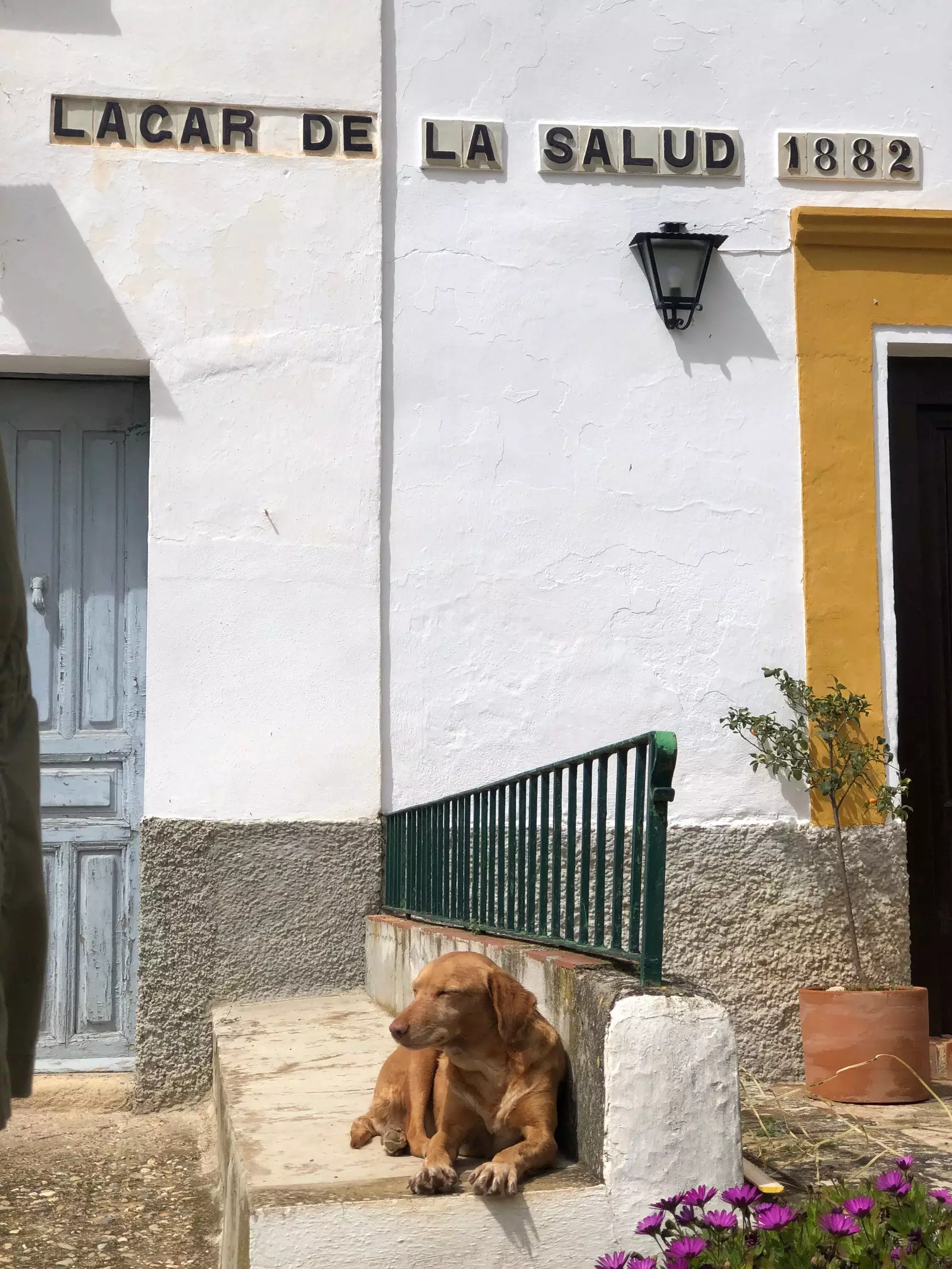
Sara, the dog of Córdoba-born Fátima Ceballos, from Lagar de la Salud.
THE COMPANIONS
We leave for the end one of the most important animals for those who cultivate the vineyards, part of this "ecosystem" which is the basis of the terroir: the dog, faithful companion of winegrowers and winemakers in the fields and the winery, tireless, cheerful, curious and, also, able to warn with his barks of unexpected (and unwanted) visits.
Sarah, the dog of Fátima Ceballos from Cordoba, from Winery of Health; Enzo, the jack russell of Veronica Ortega; Lily, the slender gauge of Command G; koshu, the Weimaraner with the name of a Japanese grape from Elías López Montero, from Verum Wineries; spoon, the puppy of Telmo Rodriguez, also a Jack Russell; bacon (real name Chloe), the border collie of the Galician José Crusat, from between the rivers; either Ruffian, the winemaker of Carlos Fernández, of B land warehouses, They are just some of the dogs with their own names that inhabit the wine ecosystem and make it a more complete world. Saramago already says in The Elephant's Journey: "A dog is life insurance, a tracker, a compass with four legs.
